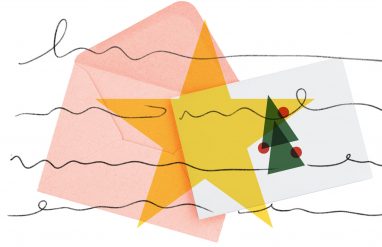Characters are arguably the most important part of any fictional work. Whether in a book, television show, or movie, characters are the ones audiences identify with and the vehicles for telling the entire story. But how do you go about creating characters that people will love, fear, want to know more about, and find utterly unforgettable?
It all begins with a character’s traits. Character traits are the essential building blocks of every character in a story, and choosing the right traits can help establish unique identities that will engage your audience from start to finish. Here’s what you need to know about writing great characters, the unique words you need to describe those characters, and how to get started on creating your own complex characters from scratch.
What are character traits?
When you meet a new person, you often learn about them by observing their traits. A trait is “a distinguishing characteristic or quality, especially of one’s personal nature.” The characters in stories have traits as well.
A character trait is a literary term for adjectives and descriptions that writers use to add personality and depth to characters. In fictional stories, character traits serve a number of purposes, including:
- Helping readers connect and identify with a character.
- Providing insight into a character’s motivations.
- Making it easier to differentiate between two characters.
- Solidifying a character’s role, such as villain or hero, in the story.
- Adding complexity to each character.
Character traits may be internal or external. External traits are things another person might notice, like how someone looks, their particular accent when speaking, or how they carry themselves. Internal traits have more to do with what’s going on inside a character’s mind. They are the emotional elements, private thoughts, and actions that make up a character’s personality.
The many different kinds of character traits
When it comes to deciding on traits for your own characters, there are no rules. Just like no two people on earth are exactly alike, no two characters in a story will ever be exactly alike. Let’s check out some words you might use when describing your own characters’ one-of-a-kind traits.
Personality
- charming
- stoic
- approachable
- reclusive
- ambitious
- impulsive
- demanding
- poised
- distrustful
- even-tempered
Physical attributes
Beliefs and morals
Classic hero traits
Classic villain traits
Building characters
Now that you’re armed with a great character vocabulary, let’s learn a little more about how to build characters.
Option one: Start with the character
One method of character building is to begin with an idea of your character’s role or defining trait and build from there. For example: a queen.
Ask yourself questions about your character’s motivations and the way others see them.
- What does the queen look like?
- How did the queen ascend to power?
- Do people like this character? Why or why not?
- What is someone’s first impression of this character?
- What is this character afraid of?
- What does this character want more than anything?
As you answer questions about your character, their physical appearance, beliefs, personality and motivations will begin to emerge. The next step is to write them into a scene and see how these qualities impact their actions and interactions.
Writing a new scene? Check out these tips on creating atmosphere and mood.
Option two: Start with traits
On the writing podcast Death of 1000 Cuts, author Tim Clare frequently uses timers and lists to flesh out ideas for everything from characters to story locations to plot points. The idea is to let the creative flow and avoid overthinking things.
Try setting a timer for 10 minutes and making a list of interesting traits a character might possess. These might include physical attributes, personality quirks, preferences, and strengths and weaknesses, like:
- smart
- anxious
- curly hair
- wears a lot of purple
- loves video games
- hates chocolate
- lives in outer space
- holds grudges
- ambitious
Once time has lapsed, look at your list and start to dig into the traits you wrote down. Circle 8–10 character traits and begin to flesh them out. How do these traits work together? How did your character come to possess these traits?
As you begin to write your characters into scenes, their traits will solidify and you will get to know them better. Before you know it, they will feel real, and the traits you spent time cultivating will help drive the rest of your story.
Take the quiz
Is dedication to learning one of your traits? You can make it one by revisiting these traits as often as you need them with our dedicated word lists on personality traits, physical attributes, beliefs and morals traits, classic hero traits, and classic villain traits. We also have a short quiz to test your knowledge on character traits in general.












